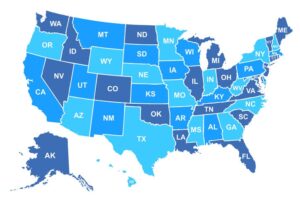How democratizing data could drive analytics – Digital Insurance

Data is one of the most valuable assets a business can have. It is the new currency, a competitive advantage that can be used in decision-making, risk management and reducing costs. Data is crucial to the insurance industry. Yet with all the vast amounts of data available to our business, many firms cannot identify what data they have, where it is stored, what information it contains and who is responsible for it. Furthermore, many companies have silos that limit access to data, preventing business units from sharing knowledge, and making it very difficult for companies to leverage the full value of their data.
In many ways, we are far behind other industries in harnessing the power of data. But we should not despair. There is a clear business case for democratizing – or said more plainly, broadly sharing – data across an enterprise. If we responsibly open up data while working to mitigate the potential risks, there can be meaningful payoffs for our customers and companies.
Data democratization is the future. Historically, data was owned by IT departments, and business units that needed access to data would have to go through IT. This made sense when data was limited and used simply to administer the business. The sales team had access to pipeline information, the operations team had access to enforce management records, and the finance team had access to financial data. But this segmented view of data is no longer appropriate given the explosion of data in the last decade. The industry needs to change these outdated practices, as making data available for broader use across an organization can pay dividends.
For example, if the finance team has access to pipeline information traditionally owned by the sales offices, they can use analytics to predict which leads will convert to sales. Feeding that information back to sales teams will allow agents to focus their time on the clients with the highest probability of conversion. Another use case for data sharing is to provide the operations team with financial data on a customer, such as lifetime customer value. This would prompt the call center to give a more personalized touch to customers with higher lifetime value. These are just two examples. The opportunities are vast and, in many cases, are still being discovered. Having a centralized data platform that the right individuals and teams can access equips organizations to effectively leverage data, analytics, AI and machine learning.
Benefits
When there is open data access across an organization, management can have confidence that solutions and decisions are made based on facts instead of opinions or impressions.
Eliminating bias
Having experts involved from different areas of the company ensures analysis is free from bias and maximizes the use of the information. For instance: today individual business units are incentivized to maximize sales on their product line, which may lead to a suboptimal mix of business. Having a corporate function looking across all product lines, with full access to the data, can lead to clear and fair comparisons of products. Ultimately, that may result in emphasizing one product line over another to drive improved profitability. Data democratization is meant to reveal these types of insights and drive better decision-making.
Increased collaboration
Collaboration has long been a way to generate value for the company. With the onset of new disciplines, particularly as it relates to technology and analytics, this becomes even more true. Business areas will be better off if they build partnerships with experts in the technology realm. But when teams restrict their data, it can create frustration, or worse, animosity, between potential partners. Sharing data is a gateway to promote a free exchange of not just information, but also of ideas and solutions.
Reduced Costs
There are two aspects to data democratization – reducing costs and enhancing revenue. The cost reduction is driven by the elimination of duplicative data collection and analysis. Leveraging one centralized data platform with shared visualization and analytics tools can reduce the labor cost around data and free up human capital to spend time on more value-added activities.
So, if data democratization is so beneficial, why are more carriers not embracing it? There are several legitimate concerns that cause companies to drag their feet on opening up data more broadly.
Regulatory concerns
From a regulatory perspective, companies worry about compliance risks associated with sharing data. How confidential is the information and do you want everyone to have access to it? How do you protect against mishandling of information? Firms need to ensure democratization occurs within the legal and privacy guidelines of the organization. Negligence in this area could result in legal proceedings, fines, and/or severe and lasting damage to company reputation (think of the Wells Fargo scandal in 2016). Insurers must be mindful of the sensitivity of both personal and financial information.
Misinterpretation of data
From a business perspective, leaders and colleagues rightfully worry about potential downstream impacts of misusing data. This is a risk when it comes to any numerical or statistical information. When reviewing data in isolation, lack of context, missing or incorrect data, or inconsistent definitions can cause the user to draw erroneous conclusions.
Consider if a leader unfamiliar with life insurance and annuity products tries to compare premiums between these two products. In doing so, that leader might draw the conclusion that the company should focus on annuities over life insurance since the top line revenue will be higher. But this ignores any context about the associated expenses, risks, and profitability for these products. This risk can be mitigated by presenting data clearly and in context, as well as training employees to understand the implications of misinterpreting data.
Legacy issues
From a practical perspective, one might wonder: is data democratization even possible? Archaic systems can make it cost-prohibitive to extract data for all. Legacy systems are inherently inflexible and can stall out the data democratization efforts of any organization. To overcome this challenge and integrate legacy data into modern infrastructures, companies must rely on their IT expertise to minimize costs of system conversions and choose flexible and efficient tools for centralizing, cataloging, and using data.
The way forward
In order to make data democratization successful in a company, there must be clearly defined roles and responsibilities throughout the design and implementation process. There also must be clear goals and requirements as to why this is being done, which will help drive cultural change around the mindset of data. Naturally, as with any large-scale effort, companies should do a cost-benefit analysis when undertaking data centralization. This CBA should include not only the cost of the data platform being built but also the potential expense savings and revenue growth driven by increased analytics. Think back to the example of analyzing sales pipeline information – that type of analysis and change in selling strategy could drive an increase of a million dollars a year in sales and should be considered in the CBA.
The challenge for today’s businesses is to figure out how to comply with regulatory and practical concerns while getting the optimal benefits for customers, the business and the insurance industry. There should be collaboration with legal and data governance experts, along with setting up access rights and permissions. There also needs to be clearly defined requirements and the selection of well-designed tools. Companies must promote change management and support training and development around data governance. From a cost perspective, they should also require a CBA which measures costs against hard-dollar gains from analytics.
Companies who reimagine how they distribute, consume and analyze data are likely to save time and money, uncover more insights, and make better business decisions. Now that’s an outcome we can all get behind.



